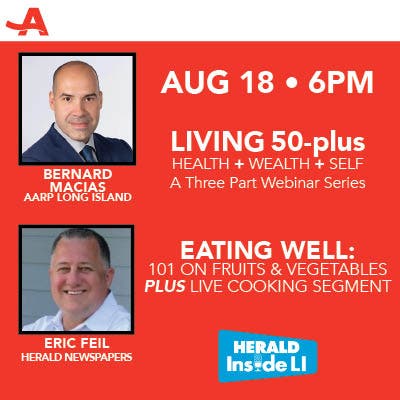
It's crucial to consider your guest's tastes when creating a menu. You should reflect their tastes and preferences in your food choices. Always plan your menu from a guest's perspective. Also, you should consider the current market. The cost of your operation will be affected by whether the item is in-season or not. The availability of labor, ingredients and other factors should be considered. You can impact the quality of your menu by considering how readily these items are available.
The first step in menu planning is determining the cost of your menu. The cost of your food can determine how much you charge for certain dishes. Having a fixed budget and a set budget will help you make the most of your budget. A well-planned menu will save you money and avoid unnecessary expenses. You will also be more profitable. You can also create a custom menu that is unique to your business, and will satisfy your customers' requirements.

The next step is to identify your supply sources for menu items. You might find it difficult to source certain products depending on where you live. It is important to know what products are available in your area before you can decide what foods to cook. Certain foods may only be available in certain seasons. You should also consider your budget and the number you'll need for cooking. By assessing these factors, you'll be able to determine the best menu for your business.
After you have determined the price for your menu items, you will be able to plan your meal. This is the most important part in menu planning. It can make or break your business. A well-planned menu is a great way to save money and increase revenue. But a poorly planned menu can harm your reputation and impact your profitability. This can make a difference in the success of your business. Successful restauranteurs are able to satisfy customers' needs.
It is important to consider the cost and time taken to prepare dishes as well as what the customer's preferences are. A menu that appeals to customers can be prepared by taking into account the time and cost of food. It is also important to consider the cost of production and how many employees you'll need to hire and train. This guideline will help you decide what product you need.

Last, think about the cost of your menu. A proper menu is based on the budget. You cannot afford to offer high quality food at an expensive price if your budget is limited. Choose the most cost-effective meals and set a budget. A good plan will be based on the number of people you'll serve and the size of your kitchen. By planning well, you can cut food waste, improve efficiency, save money and reduce food waste.
FAQ
What are the ten best foods to eat in America?
These are the 10 best foods to try:
-
Avocados
-
Berries
-
Broccoli
-
Cauliflower
-
Eggs
-
Fish
-
Grains
-
Nuts
-
Oats
-
Salmon
How do I get enough vitamins?
The majority of your daily needs can be met through diet alone. Supplements may be necessary if you are not getting enough of a particular vitamin. A multivitamin supplement can provide all the vitamins you require. Or you can buy individual vitamins from your local drugstore.
Talk to your doctor to find out which foods are rich in vitamins. Some examples of rich sources of vitamins E and K include dark green leafy vegetables, such as spinach.
Ask your doctor to help you determine the right amount of vitamin. Your medical history and current health will help you determine the best dosage.
What should my weight be for my age and height? BMI calculator and chart
To determine how much weight loss you need, a BMI calculator is your best friend. Healthy BMI ranges between 18.5 to 24.9. To lose weight, you should aim for a loss of 10 pounds per year. Enter your height and weight to calculate your BMI.
This BMI chart will help you determine if your body is overweight or obese.
What is the problem with BMI?
BMI stands to Body Mass Index. It is a measurement of body weight based on height. This formula calculates BMI.
The weight of a kilogram divided by its squared height in meters.
The result is expressed using a number from 0 through 25. A score of 18.5 or higher indicates overweight, while a score of 23 or higher indicates obesity.
A person who weighs 100 kg and has a height of 1.75 m will have a BMI of 22.
How often do I need to exercise?
Exercise is essential for maintaining a healthy lifestyle. There is no time limit on how much you should exercise. It is important to find something that you enjoy and stay with it.
If you work out three times a week, then aim to complete 20-30 minutes of moderate intensity physical activity. Moderate intensity means that your muscles will continue to work hard even after you finish. This type workout burns about 300 calories.
If you prefer to walk, go for 10 minute walks four days a week. Walking is easy on the joints and has low impact.
Jogging three times a week for 15 mins is enough if you want to run. Running can help you burn calories and to tone your muscles.
If you're not used to exercising, start slowly. Begin with 5 minutes of cardio every other day. Gradually increase duration until you achieve your goal.
Why does our weight change with age
How do you know if your bodyweight changes?
If there are less calories than muscle mass, then weight loss is possible. This means that daily calories should be less than daily energy. Activity levels are the most common reason for weight loss. Other causes include illness, stress, pregnancy, hormonal imbalances, certain medications, and poor eating habits. A person who has more fat than their muscle mass will experience weight gain. It occurs when people eat more calories than what they use in a given day. Overeating, increased physical activity and hormonal changes are all common reasons.
The primary reason we lose weight is that we consume less calories than what we burn. By exercising regularly, our metabolism rates increase which in turn burns more calories during the day. This doesn't necessarily mean we will lose weight. What matters is whether we are losing fat or building muscle. We will lose weight if we burn more calories than we consume. But, if we consume far more calories than what we burn, then we actually store them as fat.
As we age, we become less agile and don't move as often. We also tend to consume less food than when we were younger. As a result, we gain weight. On the flip side, we tend to have more muscle mass so we look bigger than we really are.
There's no way to tell how much weight you've lost unless you weigh yourself every week. There are many methods to measure your weight. You can gauge your waist size, hips, hips, thighs and arms. Some prefer to use bathroom scales, while others prefer tape measures.
If you want to track your progress, you should try weighing yourself once a week and measuring your waistline once a month. You can also take pictures of yourself every few months to see how far you've come.
Online measurements of your height and weight can help you determine your body mass. If you are 5'10" tall, and you weigh 180 lbs, then you would probably weigh 180 lbs.
Statistics
- The Dietary Guidelines for Americans recommend keeping added sugar intake below 10% of your daily calorie intake, while the World Health Organization recommends slashing added sugars to 5% or less of your daily calories for optimal health (59Trusted (healthline.com)
- According to the Physical Activity Guidelines for Americans, we should strive for at least 150 minutes of moderate intensity activity each week (54Trusted Source Smoking, harmful use of drugs, and alcohol abuse can all seriously negatively affect your health. (healthline.com)
- According to the 2020 Dietary Guidelines for Americans, a balanced diet high in fruits and vegetables, lean protein, low-fat dairy and whole grains is needed for optimal energy. (mayoclinichealthsystem.org)
- WHO recommends reducing saturated fats to less than 10% of total energy intake; reducing trans-fats to less than 1% of total energy intake; and replacing both saturated fats and trans-fats to unsaturated fats. (who.int)
External Links
How To
How to keep your body and mind healthy
The main goal of this project was to make some suggestions on how to keep your body healthy. It is important to know what you should do in order to maintain your health. To do this, we needed to discover what is best for our bodies. After looking at the various methods people use to improve their overall health, we realized that there were many that could help. Finally, we came to some suggestions that would allow us to stay happier and healthier.
We started off by looking at the different types of food that we eat. We found that some foods are harmful and others are good for us. We know sugar is bad for you because it causes weight gain. Fruits and vegetables, on the other hand are healthy because they are rich in vitamins and minerals that are vital for our bodies.
Next, we will be looking at exercise. Exercise can help our bodies become stronger and give them more energy. Exercise makes us happy. There are many types of exercise that we can do. Running, swimming, dancing, lifting weights, and playing sports are some examples. Yoga is another way to improve your strength. Yoga is a great way to improve flexibility and your breathing. We should avoid junk food and drink lots of water if we are trying to lose weight.
Let's talk about sleep. Sleep is an essential part of our daily lives. Lack of sleep can lead to fatigue and stress. This can lead us to many problems such as anxiety, back pains, depression, heart disease or diabetes, and even obesity. It is essential that we get sufficient sleep in order to keep our health good.